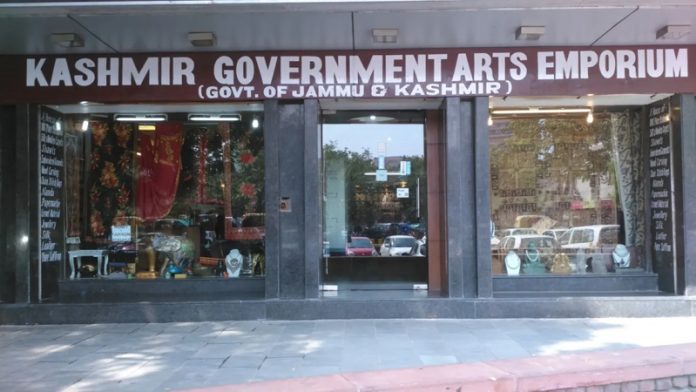
The death of Hassan Nasrallah, leader of Hezbollah , in an Israeli airstrike last week has focused attention on the armed groups supported by Iran that are dedicated to countering American and Israeli influence in the Middle East. The network that Iran calls the " axis of resistance " includes Hamas , Hezbollah, the Syrian government , the Houthis of Yemen, and armed groups in Syria and Iraq. Iran fostered the groups over decades to enable them to carry out attacks on Israel as well as other countries, such as Saudi Arabia, that Iran has sometimes viewed as enemies.
The network also provided Iran with valuable allies on or near Israel's border that could act as a deterrent against Israeli attacks on Iran itself. When Hamas led deadly attacks in Israel on Oct. 7, 2023, and Israel responded with a devastating invasion of the Gaza Strip, many of the groups carried out their own strikes against Israel or attacked U.
S. troops in Iraq and Syria because of Washington's support for Israel. Israel has tested the strength of the alliance by carrying out audacious attacks in Lebanon, Syria, Yemen and even Iran itself, where it assassinated a top Hamas leader as axis leaders assembled for Iran's presidential inauguration.
Artificial Intelligence(AI) Java Programming with ChatGPT: Learn using Generative AI By - Metla Sudha Sekhar, Developer and Lead Instructor View Program Artificial Intelligence(AI) Basics of Generative AI : Unveiling Tomorrow's Innovations By - Metla Sudha Sekhar, Developer and Lead Instructor View Program Artificial Intelligence(AI) Generative AI for Dynamic Java Web Applications with ChatGPT By - Metla Sudha Sekhar, Developer and Lead Instructor View Program Artificial Intelligence(AI) Mastering C++ Fundamentals with Generative AI: A Hands-On By - Metla Sudha Sekhar, Developer and Lead Instructor View Program Artificial Intelligence(AI) Master in Python Language Quickly Using the ChatGPT Open AI By - Metla Sudha Sekhar, Developer and Lead Instructor View Program Office Productivity Zero to Hero in Microsoft Excel: Complete Excel guide 2024 By - Metla Sudha Sekhar, Developer and Lead Instructor View Program Astrology Vastu Shastra Course By - Sachenkumar Rai, Vastu Shashtri View Program Data Science SQL for Data Science along with Data Analytics and Data Visualization By - Metla Sudha Sekhar, Developer and Lead Instructor View Program Web Development A Comprehensive ASP.NET Core MVC 6 Project Guide for 2024 By - Metla Sudha Sekhar, Developer and Lead Instructor View Program Office Productivity Mastering Microsoft Office: Word, Excel, PowerPoint, and 365 By - Metla Sudha Sekhar, Developer and Lead Instructor View Program Marketing Digital marketing - Wordpress Website Development By - Shraddha Somani, Digital Marketing Trainer, Consultant, Strategiest and Subject Matter expert View Program Web Development Mastering Full Stack Development: From Frontend to Backend Excellence By - Metla Sudha Sekhar, Developer and Lead Instructor View Program Finance Financial Literacy i.e Lets Crack the Billionaire Code By - CA Rahul Gupta, CA with 10+ years of domain experience, trainer View Program Leadership Business Storytelling Masterclass By - Ameen Haque, Founder of Storywallahs View Program Marketing Future of Marketing & Branding Masterclass By - Dr.
David Aaker, Professor Emeritus at the Haas School of Business, UC Berkeley, Author | Speaker | Thought Leader | Branding Consultant View Program HR Human Potential and the Future of Employment By - Lynda Gratton, Prof. at London Business School, Speaker, Author, Global Thought Leader View Program Strategy ESG and Business Sustainability Strategy By - Vipul Arora, Partner, ESG & Climate Solutions at Sattva Consulting Author I Speaker I Thought Leader View Program Finance Financial Reporting and Analytics By - Dr. C.
P. Gupta, Professor: Department of Finance and Business Economics, University of Delhi View Program The response from Iran and its allied militias has been less effective than what many people in the region expected, raising questions about the network's strength and coherence. Now, as Israel continues attacking Hamas, Hezbollah and the Houthis, will the axis of resistance live up to its name? Here's what you need to know.
Iran: The Anchor For years, Iran has been an outsider in the Middle East. Iran is predominantly Persian-speaking in a region where most people speak Arabic. It is also overwhelmingly Shiite Muslim in a region where the majority are Sunni Muslims.
Its economy has been crippled by Western sanctions meant to make it a pariah. Yet Iran has succeeded in projecting military power across a large swath of the Middle East by supporting local militias with arms, training and financial backing. The groups receive Iranian support and share Iran's hatred of Israel and the United States, but they also have their own interests and are not completely controlled by Tehran.
Hamas, for example, did not coordinate its assault on Israel last October with Iran, according to Arab and U.S. officials.
Experts say that Iran is walking a delicate line, attempting to project military power while avoiding an all-out war with Israel, which could drag in the United States and endanger the Iranian regime's survival. Hezbollah: The Largest Nonstate Arsenal Hezbollah is a Shiite Muslim militant group formed with Iranian guidance in the 1980s, during the chaos of Lebanon's long civil war. It was created to fight the Israeli occupation of southern Lebanon, which ended in 2000.
The group's status in the Arab world skyrocketed after it effectively fought Israel to a standstill in 2006. Hezbollah, thought to be the world's most heavily armed nonstate group, has also grown into a powerful political force in Lebanon; expanded its operations into Syria; and helped to train Iran-linked groups in Iraq, Yemen and elsewhere. It has been designated a terrorist group by the United States and other countries.
The group began trading missiles across its border with Israel after the Hamas attacks Oct. 7, though both sides were careful to moderate their exchanges to avoid a broader war. But that approach broke down in July, when an Israeli airstrike killed Fouad Shukur, a senior Hezbollah commander, in Beirut after a rocket fired from Lebanon killed 12 children in an Israeli-controlled town.
Then, in September, Israel unleashed a surprise attack by detonating booby-trapped Hezbollah pagers and cellphones, and then bombing sites in parts of Lebanon where Hezbollah holds sway, and killing Nasrallah. The group's military capabilities and future leadership are now unclear. Hamas: A direct Link to the Palestinian Struggle Hamas, the largest Sunni member of Iran's network, was founded in 1987 during the first Palestinian uprising against the Israeli military occupation of the West Bank and Gaza.
Hamas has since been responsible for suicide attacks that killed Israeli civilians and the capture and killing of Israeli soldiers. But Hamas had also been the governing power in the Gaza Strip since 2007 until the current war loosened its grip. On Oct.
7, under the leadership of Yahya Sinwar, Hamas launched a massive assault from Gaza into Israel, killing 1,200 people, most of them civilians, and taking about 250 hostages. Israel responded with a massive military operation in Gaza that included one of the most intense bombing campaigns of the century. Gaza health authorities have reported over 41,000 deaths from the war.
The Houthis: A Group That Can Disrupt Shipping Routes The Houthis are Shiite militants who have been fighting Yemen's government for about two decades and now control the country's northwest and its capital, Sanaa, where the majority of Yemen's population lives. They staunchly oppose Israel and the United States. In 2014, a military coalition led by Saudi Arabia intervened to try to restore Yemen's internationally recognized government after the Houthis seized the capital, exacerbating a civil war that has killed hundreds of thousands of people.
After the start of the war in Gaza, the Houthis began launching drones and missiles at vessels in the Red Sea, threatening maritime traffic in one of the world's busiest waterways. They have also launched missiles and drones at Israel, triggering retaliatory airstrikes. The United States also launched airstrikes against the Houthis, and two U.
S. Navy SEALs died during a commando raid on a small ship carrying weapons components bound for Yemen. Syria: The Government and Iran-Backed Militias Iran has propped up President Bashar Assad of Syria in numerous ways, by providing loans, oil and the services of Hezbollah, whose fighters joined regime forces during some of the most brutal chapters of the Syrian civil war.
Israel says that Iran-backed forces also use the country to manufacture and store weapons that Iran distributes to armed groups in Syria and around the region, especially Hezbollah. Syria also hosts fighters who are recruited in Iran and controlled by the Quds Force, the external military and intelligence service of Iran's Revolutionary Guard. The Revolutionary Guard also fields at least two militias in Syria: the Fatemiyoun brigade, made up of Afghan refugees; and the Zainebiyoun brigade, made up of Pakistani refugees.
Iraqi Militias : Focused on Attacking U.S. Troops The Iraqi militia ranks were originally drawn largely from Shiites who were persecuted under Saddam Hussein's regime, went into exile in Iran and returned after the U.
S. invasion toppled the dictator in 2003. Some returned sharing Iran's hostile view of the United States and soon formed armed groups.
Those groups became increasingly militant and with Iran's help grew increasingly powerful as a fighting force. Their prowess as fighters helped Iraq retake the north of the country from Islamic State militants in 2017. Since then, they have become part of the Iraqi security apparatus, yet they have also attacked U.
S. soldiers based in Iraq at the invitation of the Iraqi government. Some of their forces have joined with Iranian-backed militias in Syria and attacked U.
S. soldiers fighting the Islamic State group there. Most of the groups now have political wings with representatives in Iraq's parliament.
Most recently some of these groups have also targeted Israel, including multiple strikes since the killing of Nasrallah. (You can now subscribe to our Economic Times WhatsApp channel ).














